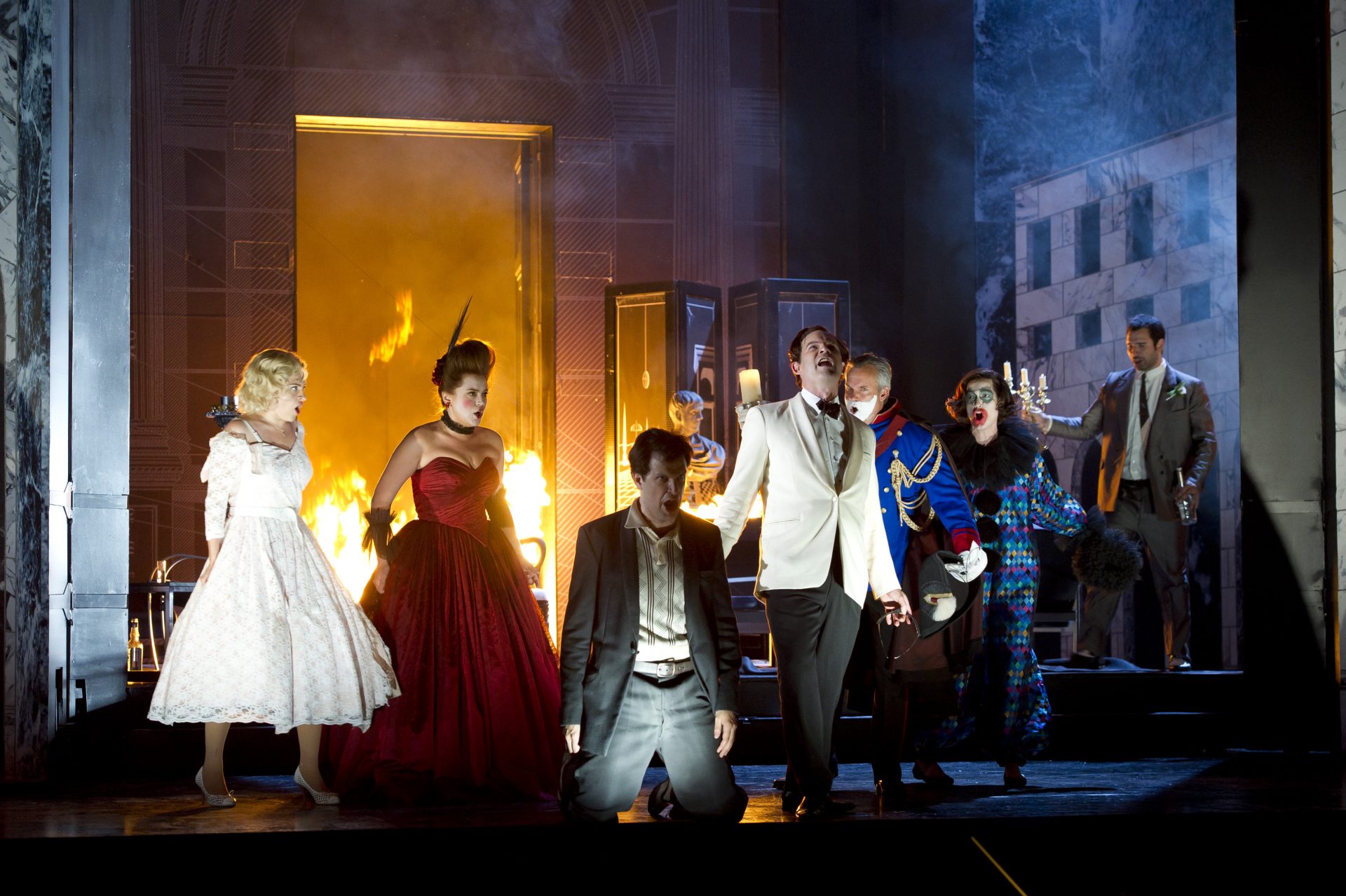Mozart at Glyndebourne
We explore Glyndebourne’s special connection with Mozart
Just two operas – Le nozze di Figaro and Così fan tutte – were staged that first season, joined the following year by Die Entführung aus dem Serail and Die Zauberflöte, and in 1936 by Don Giovanni.
Since those early years the festival has roamed both backwards and forwards in time from Cavalli to Birtwistle, but Mozart, and particularly his trio of Da Ponte operas, has remained absolutely at the heart of the repertoire, uniquely suited to Glyndebourne’s intimate house.
Mozart may not have been John Christie’s first love (that, famously, was Wagner) but it was a musical romance that grew and flourished through the Festival’s history, absolutely intertwined with his own romantic relationship with Glyndebourne’s first ever Susanna, Audrey Mildmay – the future Lady Christie.

Our first ever production was Le nozze di Figaro, which opened the Festival in 1934. Photo: Glyndebourne Archive.
Glyndebourne’s particularly personal stake in Mozart was clear to anyone who heard Christie speak about the composer. ‘His music,’ he explained in a 1957 interview, ‘is a matter of detail. It’s not a question of size and space, it’s a question of beauty, the most lovely melody, the most perfect musical construction and inevitably a sense of endearment which Mozart must still spread to any of those who knew anything about the marvels of his life and the appalling way in which he was treated… we must try to rectify his position, and feel that we are consciously in touch with Mozart when we are doing our best to show his work.’
Christie’s dedication to Mozart led, almost single-handedly, to the revival of Così fan tutte’s fortunes in the UK, ‘Saving it for Britain’, as director Graham Vick described it, where it had all but disappeared from the repertoire. He was also responsible for reintroducing audiences to Idomeneo, staging the first professional production in 1951, opening ears to the very different style and spirit of the works beyond the composer’s mature comedies.

Vito Priante and Lydia Teuscher in Le nozze di Figaro, directed by Michael Grandage, Festival 2012. Photo: Alastair Muir.
But it’s still to those comedies that we return most frequently, particularly Mozart’s three collaborations with librettist Lorenzo Da Ponte: Figaro, Don Giovanni and Così fan tutte. So what is it that keeps us coming back?
The appeal of Figaro, Mozart’s lively adaptation of Beaumarchais’s scandalous political satire of warring masters and servants, is the friction of opposites. The work is at once a charming musical comedy of manners – gossamer-light and infinitely decorative – and a deeper, darker portrait of human nature. Mozart finds real pathos in the romantic tangles of Cherubino and the Countess, who both long for a love they cannot have. Figaro too, though quick-witted and comic, has a seam of ferocity, cruelty even, which just occasionally curdles the sweetness of this domestic intrigue. This is comedy poised on a musical knife-edge.

Jonathan Kent’s 2010 production of Don Giovanni. Photo: Bill Cooper
Extremes of tone collide as never before in Don Giovanni, which combines sex and intrigue with an almost metaphysical exploration of morality and society. But what sets Don Giovanni apart from Mozart’s earlier operas, even his previous collaboration with Da Ponte, is the flow of its musical drama. Structured in two long acts as opposed to the more usual four, Mozart avoids the 18th-century genre’s traditional stop-start narrative, while keeping the pace up in music that move breathlessly through the plot in continuous musical episodes that weave their way fluidly from solo to chorus, duet to ensemble without pause.

Miah Persson and Anke Vondung in the 2006 production of Così, directed by Nicholas Hytner. Photo: Mike Hoban
In many ways Così is the odd one out of the Da Ponte trio. The only original libretto Da Ponte would write for Mozart, it’s a perplexing blend of silliness and emotional intensity that for centuries baffled audiences who didn’t know how to respond. Today we’ve made peace with the tension between the comic frame and the cynicism and bitterness of the action within it, finding in its contradictions a more truthful portrait of modern love in all its conflicts and complexities than that offered by any other opera. You may go for the beautiful music – for what is perhaps the loveliest score the composer would ever write – but you go back for the push and pull of human emotion.







